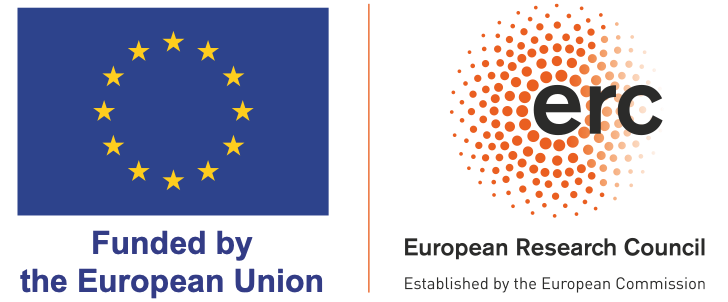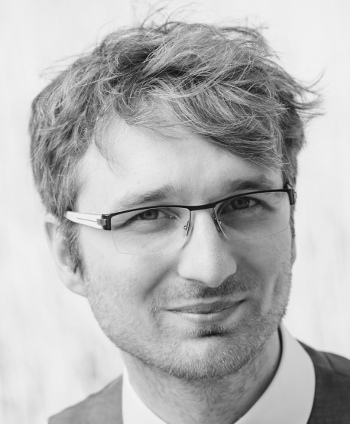HIGH-HOPeS: Higher-Order Hodge Laplacians for Processing of multi-way Signals
 ERC Starting Grant
ERC Starting Grant
(ERC StG – Grant agreement ID: 101039827)
This project has received funding by the European Union (ERC, HIGH-HOPeS, 101039827). Views and opinions expressed are however those of the author(s) only and do not necessarily reflect those of the European Union or the European Research Council Executive Agency. Neither the European Union nor the granting authority can be held responsible for them.
Overview
Network analysis has revolutionized our understanding of complex systems, and graph-based methods have emerged as powerful tools to process signals on non-Euclidean domains via graph signal processing and graph neural networks. The graph Laplacian and related matrices are pivotal to such analyses: i) the Laplacian serves as algebraic descriptor of the relationships between nodes; moreover, it is key for the analysis of network structure, for local operations such as averaging over connected nodes, and for network dynamics like diffusion and consensus; ii) Laplacian eigenvectors are natural basis-functions for data on graphs and endowed with meaningful variability notions for graph signals, akin to Fourier analysis in Euclidean domains. However, graphs are ill-equipped to encode multi-way and higher-order relations that are becoming increasingly important to comprehend complex datasets and systems in many applications, e.g. to understand group-dynamics in social systems, multi-gene interactions in genetic data, or multi-way drug interactions.
The goal of this project is to develop methods that can utilize such higher-order relations, going from mathematical models to efficient algorithms and software. Specifically, we will focus on ideas from algebraic topology and discrete calculus, according to which the graph Laplacian can be seen as part of a hierarchy of Hodge-Laplacians that emerge from treating graphs as instances of more general cell complexes that systematically encode couplings between node-tuples of any size. Our ambition is to i) provide more informative ways to represent and analyze the structure of complex systems, paying special attention to computational efficiency; ii) translate the success of graph-based signal processing to data on general topological spaces defined by cell complexes; and iii) by generalizing from graphs to neural networks on complexes, gain deeper theoretical insights on the principles of graph neural networks as special case.
Presentations and Communication
Research related to the present project was presented at the following places / events.
- Newton Institute Workshop “Hypergraphs: Theory and Applications”, London, UK, July 2024
- Nordita WINQ Workshop on Dynamics and Topology of Complex Network Systems, Stockholm, Sweden, May 2024
- SIAM Conference on Applied Linear Algebra (LA 24), Paris, France, May 2024
- Autumn school on hypergraphs, Bernoulli Society Committee on Statistical Network Science, Online, October 2023
- ELLIIT Focus Period Network Dynamics and Control, Linköping, Sweden, September 2023
- International Congress on Industrial and Applied Mathematics (ICIAM 2023) – Minisymposium on Higher order networks for complex systems, Tokyo, Japan, August 2023
- Seminar at Chair of Data Analytics and Machine Learning, TUM, Munich, Germany, August 2023
- School lectures: Signal Processing on Networks, NetSci 2023, Vienna, Austria, July 2023
- Applications of Hodge Theory on Networks Workshop, Banff, Canada, February 2023
Complete Publication list
A list of all publications associated with this project is provided below:
- Epping, B.; René, A.; Helias, M. & Schaub, M. T., Graph Neural Networks Do Not Always Oversmooth, Annual Conference on Neural Information Processing Systems (NeurIPS), 2024
- Hajij, M.; Papillon, M.; Frantzen, F.; Agerberg, J.; AlJabea, I.; Ballester, R.; Battiloro, C.; Bernárdez, G.; Birdal, T.; Brent, A.; Chin, P.; Escalera, S.; Fiorellino, S.; Gardaa, O. H.; Gopalakrishnan, G.; Govil, D.; Hoppe, J.; Karri, M. R.; Khouja, J.; Lecha, M.; Livesay, N.; Meißner, J.; Mukherjee, S.; Nikitin, A.; Papamarkou, T.; Prílepok, J.; Ramamurthy, K. N.; Rosen, P.; Guzmán-Sáenz, A.; Salatiello, A.; Samaga, S. N.; Scardapane, S.; Schaub, M. T.; Scofano, L.; Spinelli, I.; Telyatnikov, L.; Truong, Q.; Walters, R.; Yang, M.; Zaghen, O.; Zamzmi, G.; Zia, A. & Miolane, N., TopoX: A Suite of Python Packages for Machine Learning on Topological Domains, Journal of Machine Learning Research (JMLR), 2024
- Papamarkou, T.; Birdal, T.; Bronstein, M.; Carlsson, G.; Curry, J.; Gao, Y.; Hajij, M.; Kwitt, R.; Liò, P.; Lorenzo, P. D.; Maroulas, V.; Miolane, N.; Nasrin, F.; Ramamurthy, K. N.; Rieck, B.; Scardapane, S.; Schaub, M. T.; Veličković, P.; Wang, B.; Wang, Y.; Wei, G.-W. & Zamzmi, G., Position: Topological Deep Learning is the New Frontier for Relational Learning, Proceedings of the 41st International Conference on Machine Learning (ICML 2024), 2024
- Neuhäuser, L.; Scholkemper, M.; Tudisco, F. & Schaub, M. T., Learning the effective order of a hypergraph dynamical system, Science Advances, 2024, 10, eadh4053
- Frantzen, F. & Schaub, M. T., Learning From Simplicial Data Based on Random Walks and 1D Convolutions, International Conference on Learning Representations, 2024
- Grande, V. & Schaub, M. T., Disentangling the Spectral Properties of the Hodge Laplacian: Not All Small Eigenvalues Are Equal, IEEE International Conference on Acoustics, Speech and Signal Processing (ICASSP 2024), 2024, 9896-9900
- Hajij, M.; Zamzmi, G.; Papamarkou, T.; Guzmán-Sáenz, A.; Birdal, T. & Schaub, M. T., Combinatorial Complexes: Bridging the Gap Between Cell Complexes and Hypergraphs, 57th Asilomar Conference on Signals, Systems, and Computers, 2023, 799-803
- Hoppe, J. & Schaub, M. T., Representing Edge Flows on Graphs via Sparse Cell Complexes, Proceedings of the Second Learning on Graphs Conference, PMLR, 2023, 231, 1:1-1:22 (Best Paper Award)
- Grande, V. P. & Schaub, M. T., Non-Isotropic Persistent Homology: Leveraging the Metric Dependency of PH, Proceedings of the Second Learning on Graphs Conference, PMLR, 2023, 231, 17:1-17:19
- Grande, V. P. & Schaub, M. T., Topological Point Cloud Clustering, Proceedings of the 40th International Conference on Machine Learning (ICML 2023), PMLR, 2023, 202, 11683-11697
Preprints
- Hoppe, J. & Schaub, M. T., Random Abstract Cell Complexes, 2024, https://arxiv.org/abs/2406.01999
- Grande, V. P. & Schaub, M. T., Node-Level Topological Representation Learning on Point Clouds, 2024, https://arxiv.org/abs/2406.02300
- Hajij, M.; Zamzmi, G.; Papamarkou, T.; Miolane, N.; Guzmán-Sáenz, A.; Ramamurthy, K. N.; Birdal, T.; Dey, T. K.; Mukherjee, S.; Samaga, S. N. & others Topological Deep Learning: Going Beyond Graph Data, 2024 https://arxiv.org/abs/2206.00606
- Savostianov, A.; Schaub, M. T.; Guglielmi, N. & Tudisco, F., Efficient Sparsification of Simplicial Complexes via Local Densities of States, 2025, https://arxiv.org/abs/2502.07558
Contact
Computational Network Science Group
Department of Computer Science
RWTH Aachen University
Ahornstrasse 50
52074 Aachen
Germany
